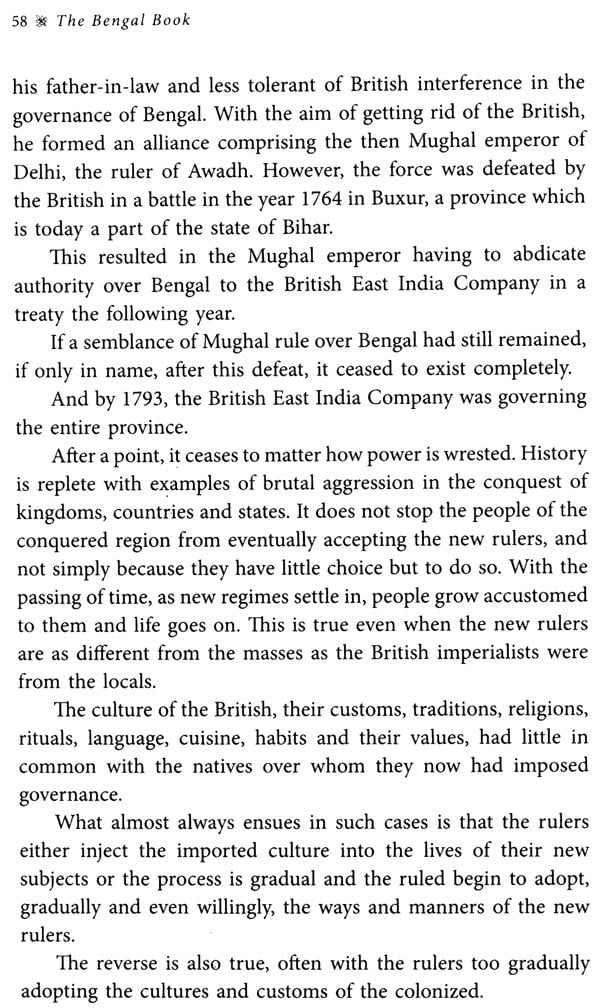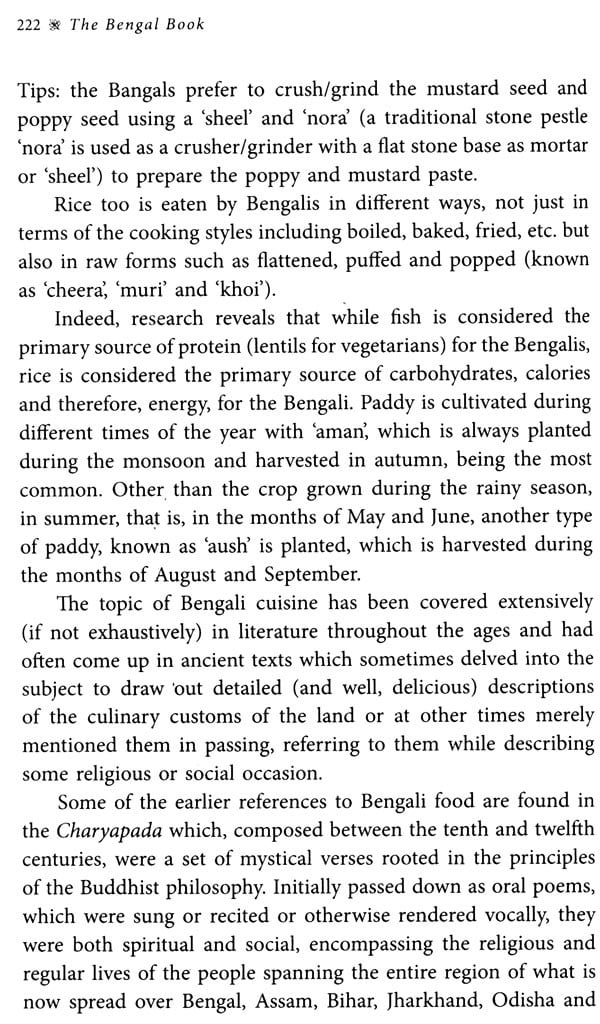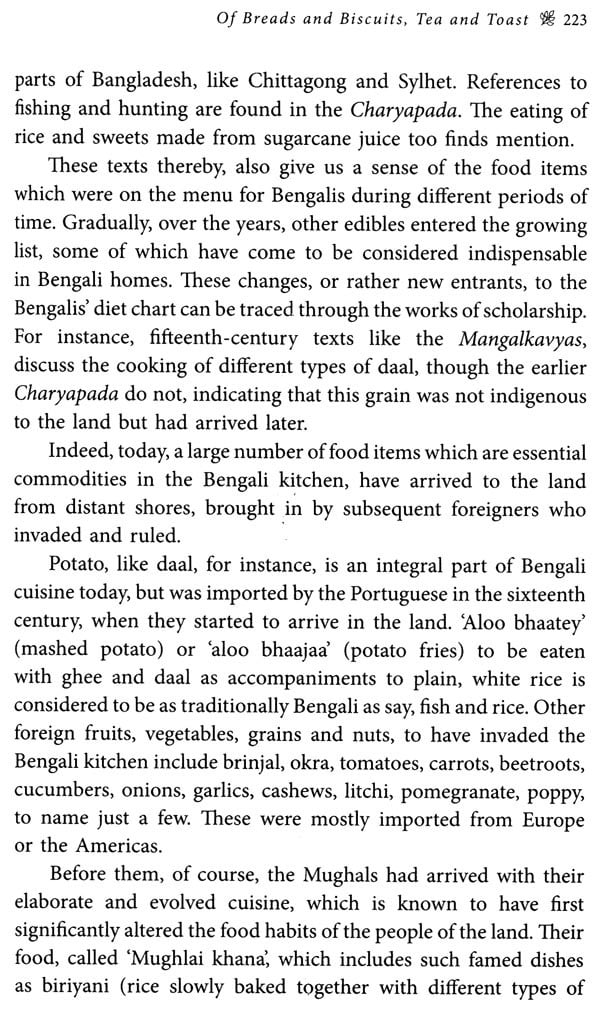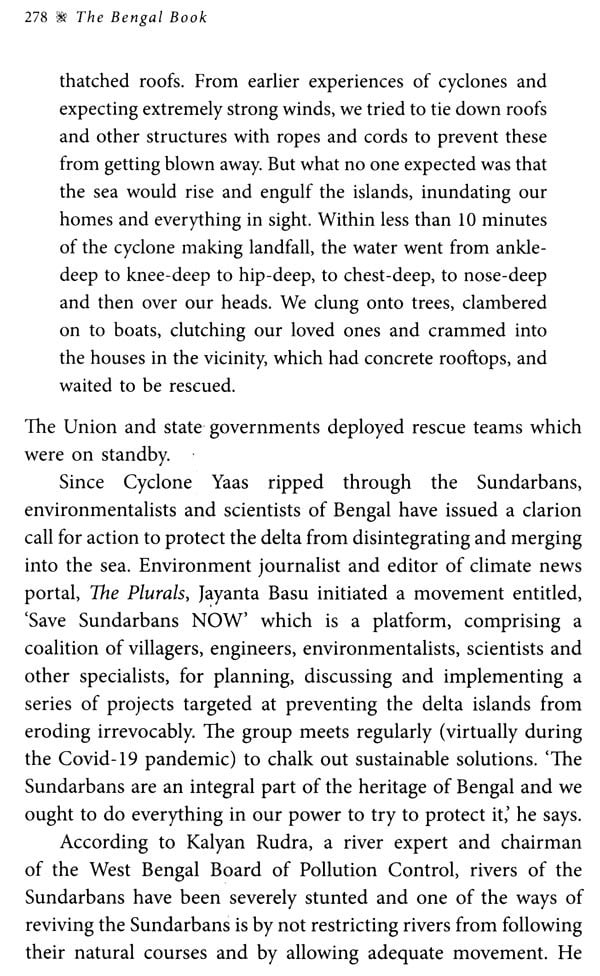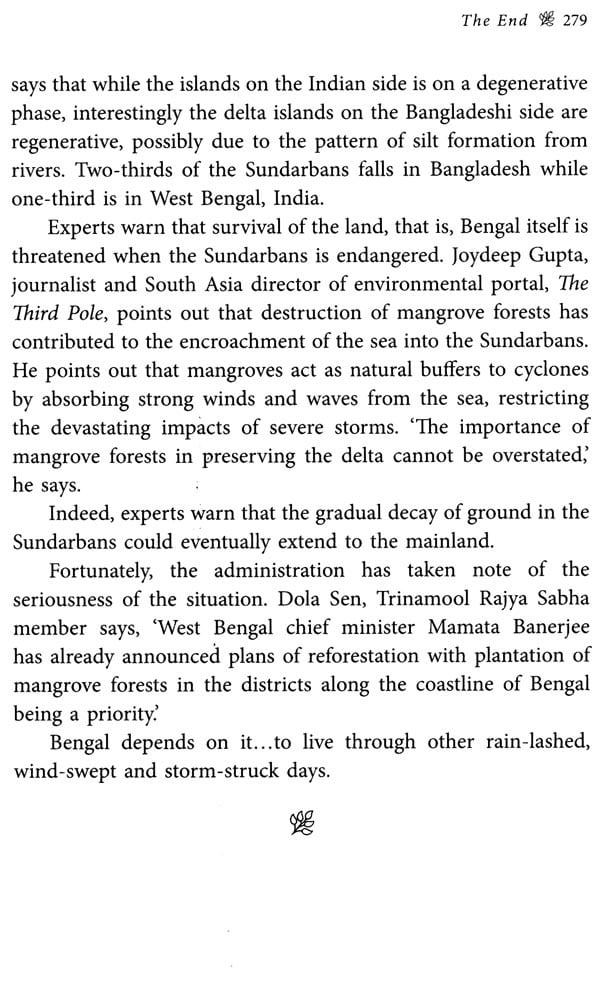
The Bengal Book
Book Specification
| Item Code: | NCZ050 |
| Author: | Dola Mitra |
| Publisher: | Rupa Publication Pvt. Ltd. |
| Language: | English |
| Edition: | 2021 |
| ISBN: | 9789355200389 |
| Pages: | 292 |
| Cover: | PAPERBACK |
| Other Details | 8.50 X 5.50 inches |
| Weight | 320 gm |
Book Description
This story of Bengal glimpses into aspects of the charted routes of known history-political, social, economic, cultural-but is narrated through the prism of the author’s own experiences.
Familiar grounds are covered but conveyed through fresh perspectives, interpreted with original insights and infused with new views and voices-those of a gamut of experts including academics and actors, economists and environmentalists, sociologists and scholars, politicians and even psychologists.
In telling and retelling bits and pieces of the life of Bengal, a plethora of gaps are plugged-chinks created by time and space-in the story. The author flashes the torchlight into these shadowy nooks and crannies and ferrets out what occurred and where it was difficult to assess what did actually go on. This book, in essence, is a factual, black and white account of selected parts of the history of Bengal, but splashed with the color of creative storytelling.
It was an honor, to say the least, when Rajanda (Rajan Mehra, owner of Rupa Publications) asked me to write this book.
He called it 'The Bengal Book' and I retained that as the title.
Speaking to him, I notice~ how affectionate he was about Calcutta and Bengal, where I understand he grew up, and his entrusting me with the task of penning its story meant a lot. So, this book is really for him. Besides, Rupa Publications will always hold a special place in my heart because it was the publisher of my first book, Decoding Didi, which was on the West Bengal chief minister.
Initially, the idea of writing a book on Bengal was a little daunting. My 'professional' experience of the region was limited to covering it for a national newsmagazine and a regional newspaper (Outlook and The Telegraph, respectively). I was neither a historian nor an expert on the subject.
In an uncanny coincidence, before writing both the books, I bumped into Gouri di (Gouri Chatterjee, who was the features editor of The Telegraph when I worked there) at a Calcutta coffee shop. She suggested that the perspective be 'personal: That conversation, over cappuccino, cakes and cookies, cleared my mind.
What stirred my soul was. a dream in which my father, Prasun Mitra, appeared and steered me in the right direction. I drove on a rain-lashed, storm-struck day to the banks of the river Hooghly, the part of the Ganges that flows through Calcutta and Bengal. I stood there alone, listening to the howling winds whispering in my ear. Rain fell like tears into the flowing river.
Some time before my father died on 2 December 1999, I had visited that spot with him. He had said, smiling, 'Once upon a time, all this had belonged to us: He was pointing to a vast region on the banks of the river. 'Dad! That is SO embarrassing; I had said looking around, hoping no one had heard us. But I should have known what he meant. He was deeply spiritual, constantly aware of life's transience, and I had never known him to have much regard for material things, much less for possession of material things.
The observation he made was purely for the sake of history and humor. Now that he is gone, I wish I had listened more closely to his stories. His direct ancestor, Gobinda Ram Mitra, was an integral character in the documented history of this region and so many tales trickled down to my father through family lore, undocumented. While writing this book, I borrowed generously from some of these tales told to us by the elders in our family.
The legends that did the rounds about Gobinda Ram and were in the public domain included the quirky story of how he wielded a golden cane. But more fascinating for me were the stories in the family that revealed he was a man of deep spiritual faith in private, unlike his public persona.
That day, with the wind whistling and the rain rushing, it dawned on me that indeed, the 'personal' experience of Bengal was much more meaningful to me. The retelling of the known story of a region becomes more interesting if it is sprinkled with bits of the unknown. There is no point, I think, in history just repeating itself, so to speak.
Book's Contents and Sample Pages



